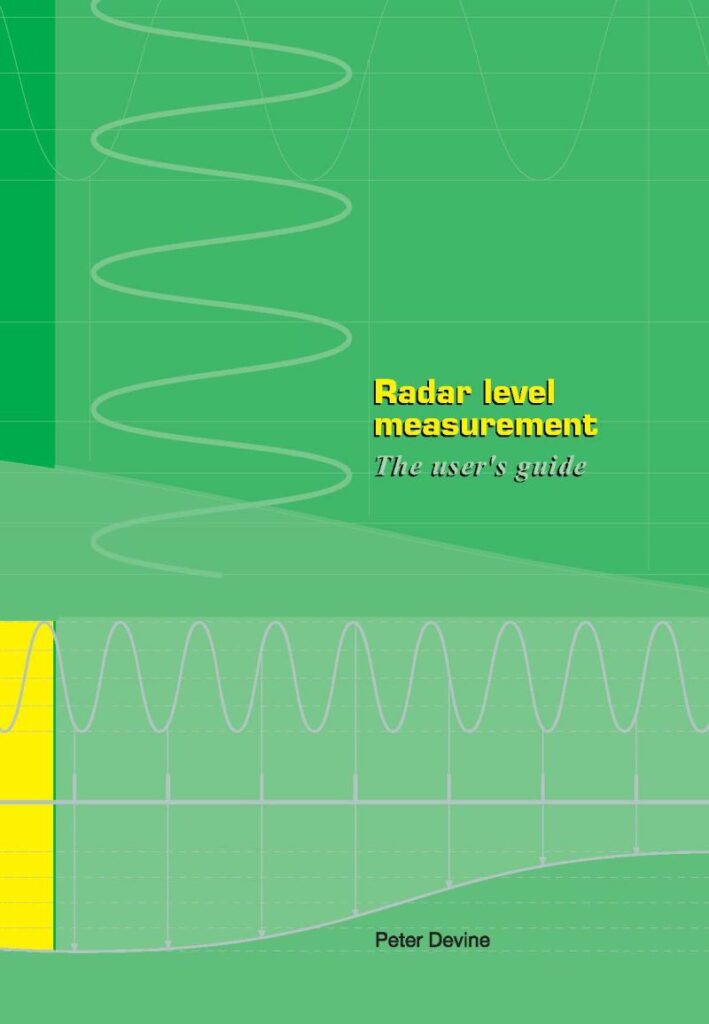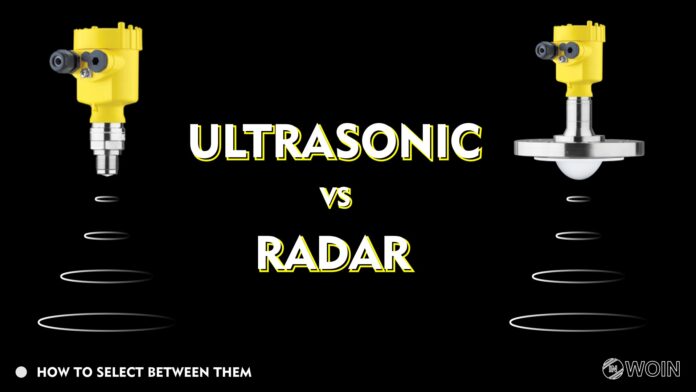For Non-contacting type-level measurements, Radar and Ultrasonic are the most common techniques that are used in the industry. In this article, I will share Radar vs Ultrasonic Level measurement.
Introduction
Level Measurement is very important in the industry. Before we start a comparison between Radar and Ultrasonic Level Measurement, I want to share the basics of Level Measurement.
For level measurement, there are multiple technologies available that are shown below.
- Differential Pressure Type
- Displacer Float type
- Ultrasonic Type
- Radar Type
- Lease Type
Radar vs Ultrasonic Level Measurement

- The ultrasonic level transmitter uses the ultrasonic waver i.e. sound waves. The ultrasonic level transmitter sends these sound waves and receives them back.
- The time difference is captured by the circuit and thus the distance between the transmitter and the actual surface is calculated by the microprocessor.
- In radar-level transmitters, the electromagnetic waves are sent and received back.
- The time difference between sending and receiving is noted by the circuit and a microprocessor calculates the distance between the transmitter and the surface of deflection.
- As ultrasonic-level transmitters use sound waves, a medium is necessary for transmitting these sound waves. Hence ultrasonic level transmitters cannot be used in vacuum services.
- Radar level transmitters use electromagnetic waves which don’t require any medium for traveling. Hence radar type level transmitter in vacuum also. We can use radar-level transmitters in more applications as compared to ultrasonic-level transmitters.
- The ultrasonic level transmitter’s response changes with the temperature change. The reason is that the speed of sound waves gets changed due to changes in the surrounding temperature.
- While in radar level transmitter, the temperature change does not affect the measurement of the level.
- Atmosphere contamination such as vapor, dust, foam, and other minute particles present in the atmosphere affect the level measurement in the ultrasonic level transmitters.
- While in the case of radar level transmitters, different frequencies of radar level transmitters are available which can eliminate the false readings by vapor, dust, foam, and other minute particles.
- Level measurement by ultrasonic level transmitter doesn’t depend on material type.
- In radar level transmitters, the measurements are totally dependent on the dielectric constant of the medium. The material with a low dielectric medium will not reflect the radar waves.
- The electromagnetic waves will directly pass through the material without detecting the material.
- A compatible combination of a radar-level transmitter and material with a compatible dielectric constant should be used. Else there will be problems with level measurement.
- The ultrasonic level transmitter cannot measure the interface of two or more liquids. The ultrasonic level transmitter can only measure one liquid level.
- In the case of radar-level transmitters, levels of different liquids with different dielectric constants can be measured. Here we can easily calculate the interface.
- Ultrasonic level transmitters can be used for measuring levels in the tank which are open to the atmosphere or for tanks having clean liquid.
- The medium between the transmitter and the material’s surface should be clear enough. i.e. without any vapors or dust particles.
- A radar level transmitter is used to measure liquid levels even though the vapor is present in between the transmitter and the measurement surface. Radar level transmitters are also used to measure interface.
- The cost of an ultrasonic level transmitter starts from about 20,000 INR. This cost varies on the make and other specific functions. The cost also depends on the design for hazardous locations and special type installations also.
- The cost of a radar-level transmitter starts from 50,000 INR. There are basically 2 types of radar-level transmitters. One is contact type and the other is a non-contact type radar level transmitter. For contact-type radar level transmitters, the cost increases.
- The reason is that the guide rod is present and is made up of unique materials—the cost increases by 1.5 times for a guided wave radar level transmitter. The cost of guided wave radar level transmitters can be up to lakhs also.
Resources
For better practical understanding I recommend this training video by VEGA by clicking on the button.

VEGA Training | Ultrasonic Vs Radar
And recently, I also found this interesting free book on Radar Level Measurement.

Radar Level Measurement the User’s Guide
EndNote
I hope these resources and Knowledge will become helpful to you in the future. And I continue to make this type of resource and knowledge-sharing posts on my website.
If you have any suggestions then feel free to ask in the comments and through email id, if you want to write an article on the website, please contact us by this mail id: contact@worldofinstrumentation.com
If you like this post you can also like my previous article on Hazardous area classification w
And you can also follow our LinkedIn group which is specially made for sharing information related to Industrial Automation and Instrumentation.


